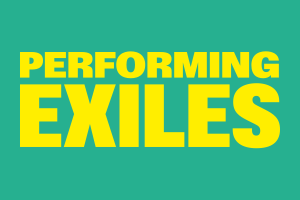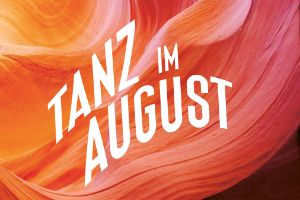
Jonathan Meese © Phtographer: Jan Bauer, Courtesy: Jonathan Meese
Jonathan Meese
Jonathan Meese’s work follows the tradition of the Gesamtkunstwerk, including painting, sculpture, installation, performance, drawing, collage and theatre work. His participation in the 1st Berlin Biennale exhibition in 1998 earned him wide recognition for his work. In a teeming installation using materials ranging from photocopies to drawings, posters and carnival masks, which were scattered throughout the space, making it resemble a children’s playroom, he indiscriminatingly celebrated the heroes and anti-heroes of world history, mythology, film and popular culture. This made it already clear: Meese is a creator of worlds. He is constantly working on, shaping and painting a large-scale work on the authority of the arts.
The notion of the Gesamtkunstwerk, with its distinctive aspect of performative art, as well as the idea of art as a counter-world – as a “dictatorship”— has merged Meese’s work with theatre from the very beginning. His space-filling installations showed his talent for theatre from an early stage. In 1998, Meese was invited for the first time to design the set for Sonnenallee by the film director Leander Haußmann. In 2004 Bert Neumann and Frank Castorf invited him to the Volksbühne in Berlin. There he developed stage sets for Pitigrilli’s “Kokain” (2004) and three other stage productions. Meese combines painting, sculpture and installation in a unique way; genres, which he still works with separately to this day, but which he increasingly combines to form a “single, striking structure, which at the same time is a manuscript, stage, situation and costume.” (Roberto Ohrt). Jonathan Meese uses this structure to fulfil the dream of boundless art.
Meese directed a stage production for the first time in his performative theatre sculpture entitled “DE FRAU”. He enticed the actors to perform free improvisation, in which everyone could intervene without any specific instructions, and thus sparked a small revolution at the established ensemble theatre. He designed sets for Wolfgang Rihm’s opera “Dionysos”, which was premiered at the Salzburg Festival 2010 under the direction of Pierre Audi, as well as the baroque opera “Médée” by Marc-Antoine Charpentier, also directed by Audi at the Théâtre des Champs Elysées in Paris 2012.
Jonathan Meese’s first contact with Richard Wagner’s “Parsifal” was in 2005 by invitation of the Berlin Staatsoper Unter den Linden. In parallel to the production of “Parsifal” on the main stage, he performed a total of five times on his own stage in the depot of the Staatsoper. Here, below the actual stage, Meese produced his own version of the opera, in which he was the stage designer and only actor with several roles. After an unsuccessful invitation in 2016 to Bayreuth, the Wagnerian temple of the muses, in 2017 Meese took on the roles of opera director, stage and costume designer of “MONDPARSIFAL ALPHA 1–8” (Wiener Festwochen) and “MONDPARSIFAL BETA 9–23”for the first time.
As of: April 2018
